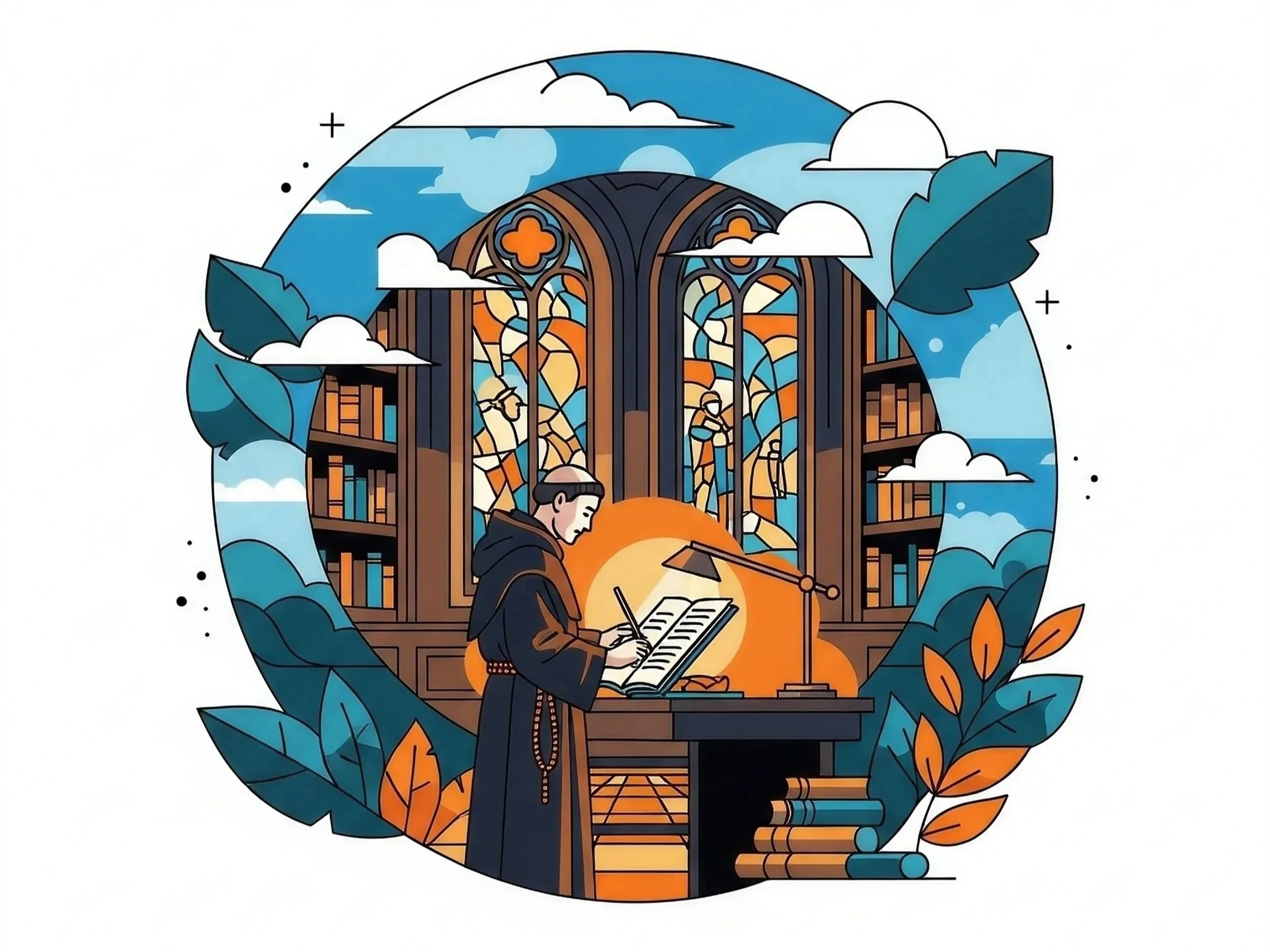An Unexpected Blueprint
Lessons from the medieval abbey for 21st century place leadership
There is a palpable sense that we are living through the end of one era and the turbulent beginning of another.
The relative stability of the post-war order is fracturing, giving way to a revival in the politics of impunity and a marked retreat from collectivism, both at the level of the individual and the state.
Social scientists have given this new reality a name: a BANI world. It is a world where our systems are Brittle, liable to shatter without warning; where populations are Anxious, living with a constant sense of unease; where outcomes are Nonlinear, with cause and effect becoming increasingly disconnected; and where events feel Incomprehensible, defying easy explanation. For place leaders, this is the challenging terrain on which we must now build.
In such moments of profound dislocation, where do we turn for guidance when the old maps no longer describe the territory? As an historian by training, I suggest we look to the past, to similar periods of upheaval, for insights on patterns of resilience and renewal.
Where can place leaders look to navigate a rapidly changing world?
Given the parallels between Pax Americana and Pax Romana, where better to look for lessons than the period following the collapse of Roman authority in Britain? With an established global order in retreat, this was an age defined by political fragmentation, conflict, and the loss of established civil structures - a BANI world of its own. Yet amidst this flux, new forms of community emerged that provided bulwarks of continuity and stability. Foremost among them was the abbey, communities of Christian monks living in common. These institutions became islands of relative order in a sea of chaos: preserving knowledge, fostering innovation, stewarding land, and maintaining social cohesion when all else seemed fragile.
This new series of Recurve Insights explores how these early medieval communities might offer a blueprint for modern place-based renewal. These were dynamic, resilient, and deeply integrated hubs that demonstrated a remarkable capacity for holistic community building. For leaders navigating the challenges of the mid-twenty-first century, their example holds urgent and practical lessons in how to build thriving, purposeful places that can weather the storms of a new and uncertain era.
Abbeys were multi-functional communities, integrating economic activity with social infrastructure, art, craft and innovation.
Beyond the cloister: The abbey as an integrated economic and social hub
Few people today will have an understanding of the significant role abbeys played in the fabric of life across Europe for more than a thousand years from the end of the Roman Empire to the Reformation. The functions of these communities were multifaceted, comprising:
Centres of knowledge and innovation: Long before the digital age, monastic libraries were the guardians of knowledge, meticulously preserving ancient wisdom and fostering new learning. They were hubs of literacy and education, not just for their own, but often extending to the wider community.
Economic engines and agricultural pioneers: Abbeys were often at the forefront of economic development. The Cistercians, for example, were masters of land reclamation, transforming marginal lands through sophisticated water management and agricultural techniques like crop rotation. Benedictine houses excelled in viticulture, cheesemaking, and even advanced meat curing processes, creating products that became regional specialities and economic drivers. This wasn't just about sustenance; it was about the skilled production of goods and the stewardship of resources.
Providers of essential social infrastructure: In an era with limited state provision, monastic communities offered crucial services. They were centres of care, providing healthcare and hospitality to the sick, the poor, and travellers alike. Their infirmaries and guesthouses were pillars of the community.
Cultural catalysts: These communities were also vibrant centres of cultural creation, shaping art, architecture (pioneering Romanesque and influencing Gothic styles), and music, enriching the societies around them.
This deep integration of spiritual purpose with practical, societal contribution is a powerful lesson. Abbeys demonstrate that a values-driven core can fuel remarkable organisational capacity and tangible local impact.
The abbey ‘Operating System’: Enduring principles for today
The enduring success of the monastic model wasn't accidental. It was built upon a sophisticated ‘operating system’ – a set of guiding principles and shared commitments, most famously codified in the Rule of St. Benedict. The underlying principles of these offer timeless wisdom for any leader seeking to build resilient and purposeful places:
Integration over silos: Abbeys inherently understood the interconnectedness of life – economic, social, cultural, spiritual. They didn't operate in silos. Today, ‘whole place’ and ‘person-centred’ approaches to public service design and funding are once again hot topics. How might we apply the holistic thinking of the abbey model to our fragmented urban planning, economic development, and social service delivery?
The power of stability and place: The monastic vow of Stability – a deep, lifelong commitment to a specific community and place – fostered profound local knowledge, loyalty, and long-term investment. In an age of transience and social disconnection, how can we cultivate a similar sense of rootedness and enduring commitment to our localities?
Shared purpose and values-driven action: A clear, shared mission, underpinned by deeply held values, provided the ‘why’ that motivated monks through centuries of change and challenge. This highlights the imperative for modern place leaders to articulate compelling, authentic narratives and shared visions that can unite diverse stakeholders towards common goals and faithfully stay the course over the long-run.
Stewardship and resourcefulness: The drive for self-sufficiency within monastic communities bred innovation and careful management of resources, from land and water to human skill. This principle of responsible stewardship is more critical than ever as we face rising environmental and economic pressures from climate change and a rise in geopolitical conflict.
A Call to reimagine: Historic wisdom for modern renewal
The challenges confronting our communities in the mid-2020s are complex. The erosion of social cohesion, the search for sustainable economic models, and the yearning for authentic belonging demand fresh thinking and courageous leadership. The medieval abbey, in its sophisticated integration of purpose, place, and practical action, offers an unexpected yet rich seam of inspiration.
This isn't about replicating the past wholesale. It’s about discerning the timeless, transferable principles that enabled these communities to thrive and serve as lighthouses through dark periods of profound societal flux. It’s about recognising that true innovation often involves a creative dialogue between the wisdom of the past and the needs of the present.
As place leaders, are we prepared to look beyond conventional models? Could the disciplined integration, commitment to place, and values-driven ethos of these ancient communities provide a powerful, if unexpected, blueprint for the flourishing places we seek to build?
I think the parallels are too compelling to ignore, and in subsequent explorations, I intend to delve deeper into specific aspects – from their role as innovation hubs to their cultivation of deep belonging – and how these might be applied to our contemporary landscape.
I'm keen to hear your views: Could these principles spark fresh thinking for your place-shaping efforts? Join the conversation on our LinkedIn Page with your thoughts.
Stay tuned for Part 2 in this Recurve Insights series, where we'll explore the monastic approach to innovation and local economic vitality – crucial lessons for navigating today's complex challenges. And if you're seeking a partner to navigate the path towards place-based renewal with fresh, historically-informed perspectives, I'd welcome the opportunity to connect and discuss how Recurve can support your vision.





